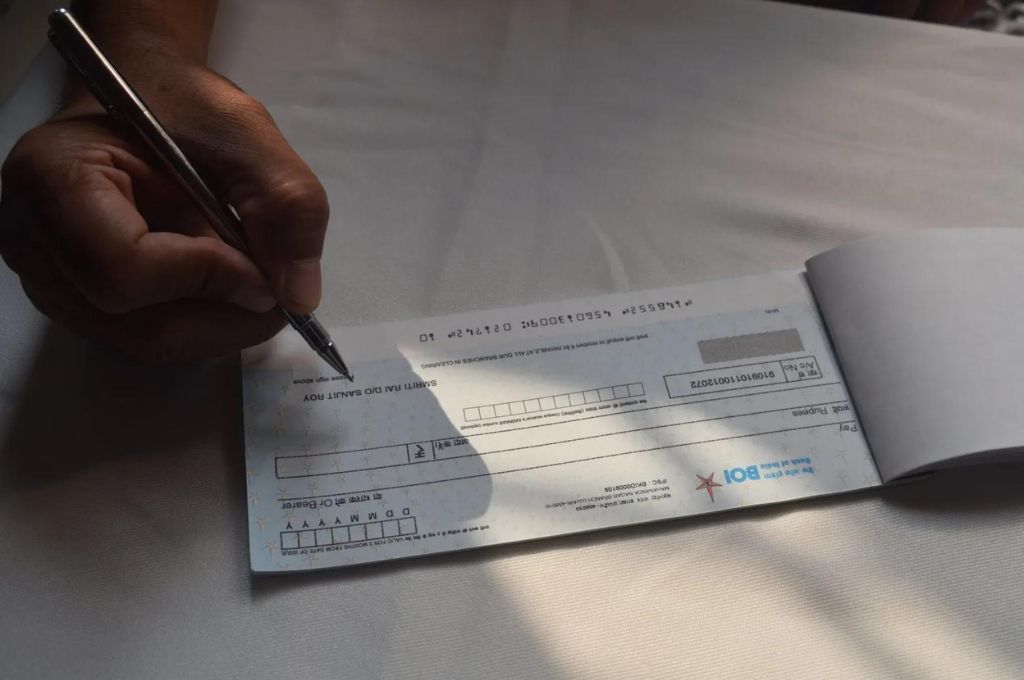On April 8, 2022, Honourable Justice A M Khanwilkar entered courtroom 3 and took his chair under the Supreme Court’s emblem: a chakra, Ashoka’s lion capital, and a motto from the Mahabharata—yato dharmastato jayah, reminding us all that dharma alone ensures victory in the long run. The arguments and hearings had been concluded much earlier during an unusually short winter, and the bench had reserved its judgement. There weren’t many people in the courtroom—some journalists, lawyers, and an onlooker or two. After a sombre pause, the judge delivered a still more sombre and far-reaching verdict: No one has a fundamental right to accept foreign donations.
While many had an inkling of this already, there was the occasional incorrigible optimist who thought that the court would take a more liberal view.
Background
The Government of India passed the Foreign Contribution Regulation Act in 1976 to prevent foreign agencies from interfering in Indian politics. In 1984, this was expanded to cover foreign donations received by nonprofits. In 2010, the law was revamped and repurposed to focus more on nonprofits than on electoral processes. This change was reflected in the new preamble, which dropped all references to democratic institutions, as well as in the main provisions, which are concerned more with the activities of nonprofits rather than politicians.1

In 2020, the law was tightened even further, asking all nonprofits to:
- receive money first in a gateway account in the State Bank of India (SBI) in Delhi
- reduce the foreign contribution available for administration expenses
- stop re-granting FCRA funds to other nonprofits, regardless of whether or not they have FCRA clearance2
These disruptive changes, introduced without following due consultative processes, caused much heartburn among nonprofits. They were already suffering from a vilification campaign on social media and reeling from a set of fast-paced changes in laws affecting them, while grappling with the nationwide disruption caused by a pandemic. Some nonprofits saw this as a violation of their fundamental rights and knocked on the doors of the Supreme Court.
The issues
Petitioners including Jeevan Jyothi Charitable Trust, Thiruvananthapuram, objected to the gateway account requirement. Noel Harper of Care and Share Charitable Trust, Vijayawada, and National Worker Welfare Trust, Secunderabad, believed that the direction to open an FCRA gateway account in SBI’s New Delhi Main Branch (NDMB) was arbitrary and smacked of bureaucratic high-handedness. It would cause a lot of hardship to nonprofits across the country, not least because the account needed to be opened in a particular branch in New Delhi. Further, the restriction on re-granting was unjustified and would make it difficult for nonprofits to collaborate with one another. It therefore violated the fundamental right to association enshrined in Article 19. The need to present Aadhaar by all trustees to acquire the registration was seen as a violation of an earlier Supreme Court decision.3 The group requested the court to restore status quo that allowed nonprofits to keep their main FCRA account in any of the approved banks, and regrant funds to others who had FCRA registrations.
The government stated that no one, be it an individual or an organisation, had the fundamental right to receive foreign contribution.
The government emphasised that foreign contribution could be inimical to national interests and therefore its utilisation had to be monitored strictly. Despite the strict provisions, foreign contribution had been rising constantly over the years. Transferring funds to other nonprofits made it difficult to audit their allocation. Additionally, it increased the proportion being spent on administrative activities of transferees rather than on the welfare of people. The government also stated that there was widespread non-compliance, with more than 19,000 nonprofits losing their licenses due to defaults. To facilitate this transition, the SBI had made adequate arrangements so that people could open their accounts from afar, and most had indeed succeeded in doing so. The government also claimed that some nonprofits were involved in the routing of funds only, thereby creating a principal–client relationship with other nonprofits. Finally, the government stated that no one, be it an individual or an organisation, had the fundamental right to receive foreign contribution and that legislature was competent to prohibit it completely or permit it partially under supervision.
The verdict
The court’s verdict endorsed the stand taken by the government. It held that the SBI had made sufficient arrangements to help people set up the gateway accounts, and the requirement itself was a reasonable one. It also stated that there was a need to protect the sovereignty of India from undue foreign influence and that the legislature’s move to regulate foreign contribution could not be faulted. Moreover, it did not find any merit in the argument that the change violated the fundamental rights of association, speech, and livelihood, or that the requirements were arbitrary. The only minor relaxation given by the court was that a trustee could now provide their passport instead of Aadhaar number as identification for FCRA registration.
The myths
Apart from the legal arguments, the 132-page order includes a number of additional comments, based entirely on the government’s submissions in court, such as:
- foreign contribution having doubled over ten years
- large-scale violations by nonprofits
- there being sufficient funds in India for charitable activities
- charitable activity being a business
The government’s assertions give a completely misleading picture of the nonprofit sector, which has helped millions of poor and vulnerable Indians over the last 50 years or more. Let’s look at these falsehoods a little more closely.
1. Foreign contributions have grown considerably in recent years
According to government data, foreign contribution grew from INR 10,292 crore in 2009–10 to INR 16,457 crore in 2018–19. That’s 1.6 times in 10 years. The average annual growth rate is just 5.4 percent, lower than the annual rate of inflation. If these figures are adjusted for inflation (using the government’s index), then the foreign contribution has actually dropped over the last 10 years in real terms.
2. There have been large-scale violations of FCRA by nonprofits
The large-scale ‘violations’ by nonprofits refer to non-filing of FCRA returns, mostly by defunct nonprofits or those that don’t receive any money. As a result, about 19,000 nonprofits lost their FCRA registration certificates. Real violations involving misuse, diversion, or anti-national activities have been few—the Ministry of Home Affair’s FCRA website lists only a dozen cases where an organisation’s FCRA has been suspended or cancelled for such violations.
3. There are enough funds available locally
The majority of private charitable funds in India tend to go to simple welfare and relief (for instance, feeding the poor and rescue and rehabilitation post disasters). Government funds to nonprofits are meant for providing services that the government itself does not want to provide directly. CSR funding is again restricted to a narrow list of activities found in Schedule VII. All this leaves a large segment of critical and complex issues, such as climate change, human rights, research, empowerment, and conflict resolution, without any domestic support. These are issues where India needs to develop understanding and intellectual rigour to keep pace with international developments. This is the reason many nonprofits working on such issues depend on cross-border flows from Europe and USA.
4. Charitable activity is a business
Charitable entities are prohibited from accepting more than 20 percent of their revenue from sales or fees. Additionally, they can take up such work only when the business activity is closely connected to their charitable purpose. Therefore, it is difficult to treat charitable entities as businesses.
5. There are plenty of nonprofits—more than 3 million—in the country
Another major myth associated with the sector (though not referred to in the judgement) is about the number of nonprofits in India, which is often said to be 3.17 million. This figure is based on a 2009 report by the Central Statistical Organisation,4 which listed all registered societies and trusts, irrespective of whether they were active or defunct. The Income Tax Portal figure of 2,20,225 tax-exempt charitable and religious entities, which covers all tax-exempt entities (including schools and hospitals), is closer to reality. Out of these, as per the government’s NGO Darpan portal, there are only 1,39,097 entities that can be called ‘nonprofits’ in any sense of the term. These include organisations that have FCRA (16,888) as well as those that do not (1,22,209). The real number of nonprofits is therefore probably between 5–10 percent of the 3.3 million figure.
The future
When thinking about the real takeaway from this judgement, we must consider: If it is the government’s rajadharma to discourage foreign contribution, then it should start taking positive and meaningful steps to encourage domestic charity. That would be a real win-win for all: the doers, the donors, and the deprived.
—
Footnotes:
- A related regulation (Electoral Bond Scheme, 2018) has no safeguards to prevent foreign companies from donating to political parties through their subsidiaries in India.
- Many organisations with an FCRA license have historically collaborated with other smaller nonprofits in remote areas through sub-granting foreign funds received from other international agencies. This funding has been crucial for these organisations, as they often do not have the networks and wherewithal to fundraise from international donor agencies. With the new change, this is now prohibited, even if the smaller nonprofits have FCRA licenses themselves.
- K.S. Puttaswamy (Retired) & Anr (AADHAAR) vs Union of India & Anr, (2019) 1 SCC 1 (paras 490 and 494).
- Compilation of Accounts for Nonprofit Institutions in India in the Framework of System of National Accounts (Report of Phase-1 of the Survey), National Accounts Division, Central Statistical Organisation, Ministry of Statistics and Programme Implementation, Government of India.
—





